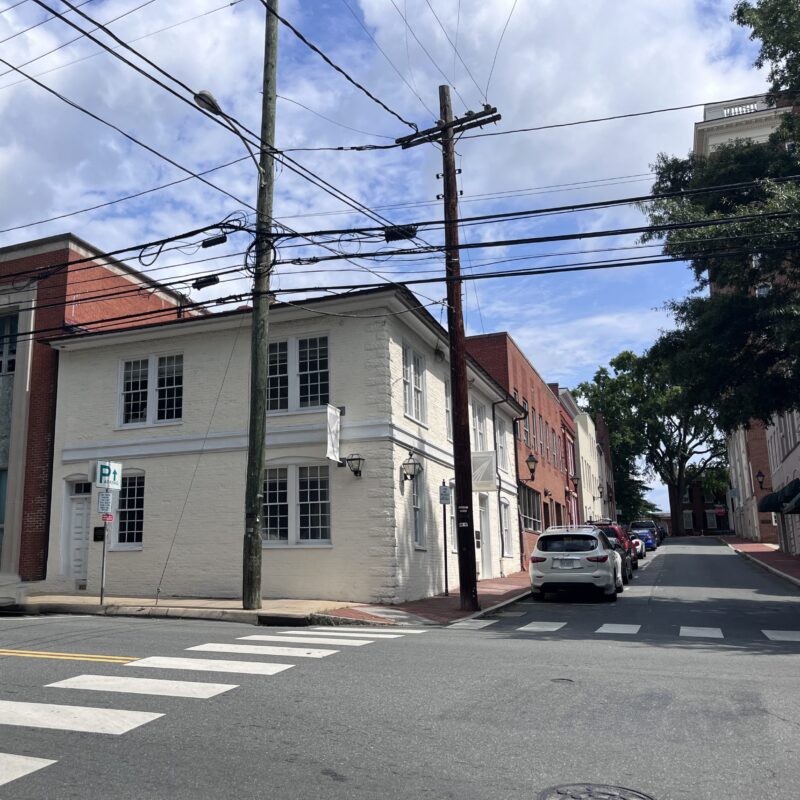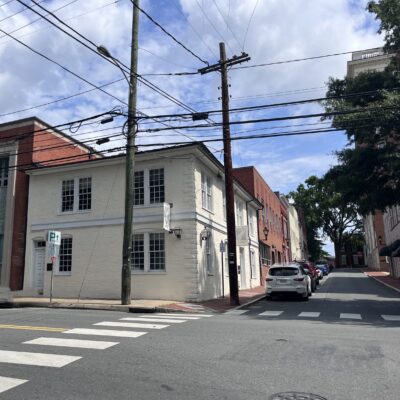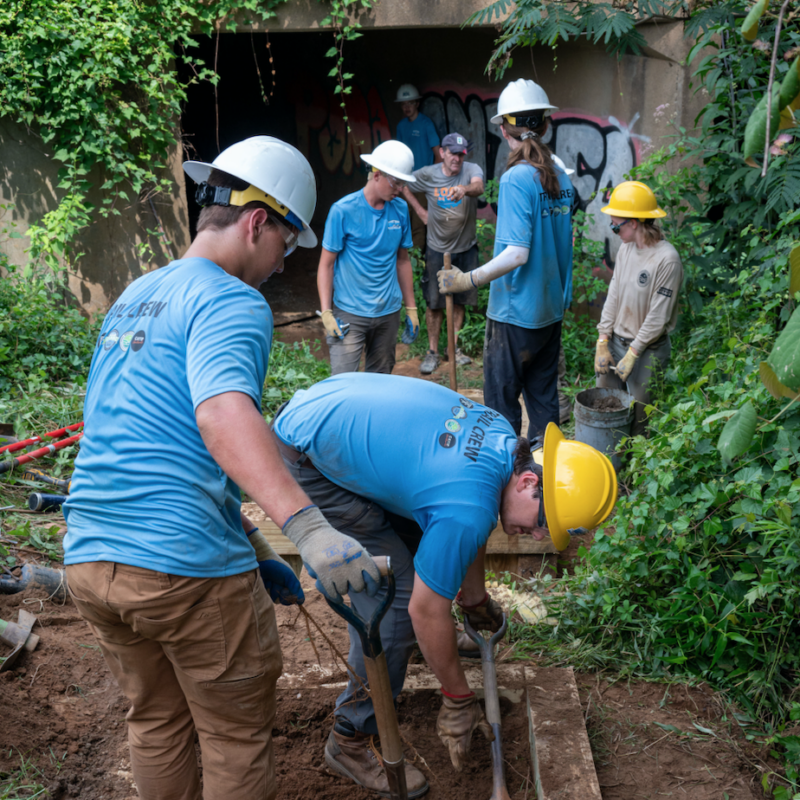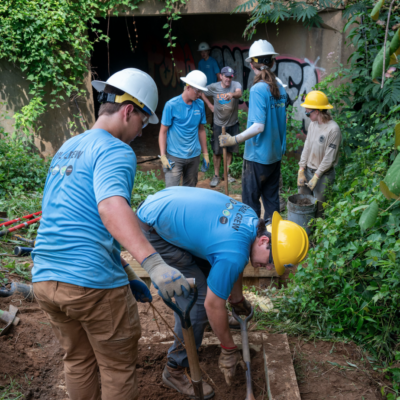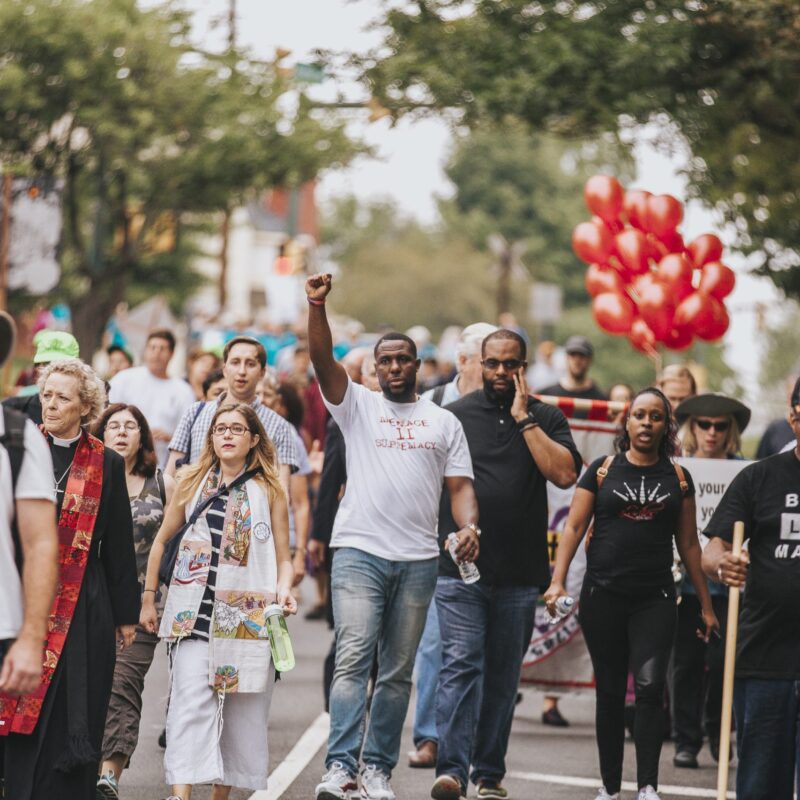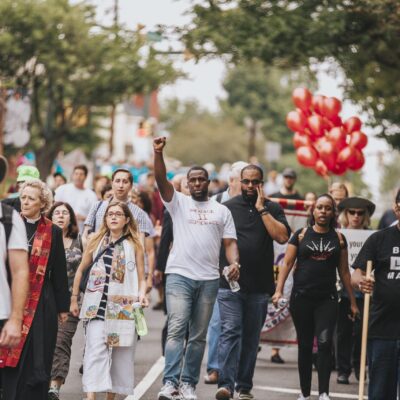art
Skate culture is one of the most overlooked folk-art traditions, but also one of the most popular; it’s alternately marginalized and heavily commercialized, and has remained one of America’s most significant underground cultural movements for over 30 years.
 Later, skaters: Black Cat Skateshop decks the walls with photos spanning the history of local skateboarding in its current exhibit. Pictured: Laura Chonoles’ "Road to Glory." |
The current photography exhibition at the Black Cat Skateshop began last month when Andy Foster, the store’s owner, extended an open invitation to the local skating community to share their work. The result is a haphazard mix of photos from around Virginia (stretching from the mid-’70s to the late ’80s) interspersed with new work by younger local skate crews like the Argyle Team (which has also produced and distributed a video of local skaters entitled Oh Smith!).
To those familiar with skating photography, the older work may look familiar: There are plenty of fish-eye shots taken above the rim of concrete bowls and half-pipe ramps. Many of the older photos are more directly sentimental, leftover snapshots from a previous generation of misfits, notably a shot of three helmeted youths, tongues wagging and fingers firmly jammed in their noses, from 1988.
Many of the contemporary shots aim for simple documentation, with street shots of board tricks and obscure local landmarks familiar to local skaters but nearly unrecognizable to someone that hasn’t kick-pushed themselves around town. Several participants try their hand at aesthetic experimentation, with results ranging from clumsy to compelling; the most effective ones manage to combine the deceptively simple grace of skateboarding with the sublime, like Foster’s tiny, ’70s-era portrait of a suburban skater, matted imaginatively at the top of an oversized frame, or a gorgeous pair of LOMO photographs by Riley Duncan, a skater from the Argyle Team. ("LOMO" cameras were made by an Austrian company in the early ’80s; the motto of "Lomography" was "Don’t think, just shoot.")
The photographs fill one wall of the shop; the rest are covered with skateboard designs, including several imaginatively decorated ones from the "Broken Decks" show held at the same time last year. A Hendrix bootleg plays quietly as Foster puts the finishing touches on an iron-on t-shirt. It’s a rainy afternoon and the store is mostly empty, but Andy is cheerful and hospitable. Despite the racks of t-shirts, boards, wheels and skate videos, the place feels more like a living room than a store, and it’s not hard to see why the place has become the center of the local skating subculture (or, for that matter, the subculture’s exhibition space).
Although the photography here is largely unprofessional, Foster is hardly ignorant of the art world—he once dropped out of a graduate program in Art Criticism. "I used to argue with all the Modernists there; they just couldn’t understand the appeal of something like this," he says, holding up the finished t-shirt, which now bears a ’60s-era Jack Kirby illustration of The Mighty Thor.
Indeed, skate culture is so interesting and valuable because it provides a vibrant alternative to the established traditions of mass culture, and the photo show at Black Cat is no exception. The work may be of wildly varying quality, but that’s part of the appeal. Anyone looking for austere fine-art photography to go with their wine and cheese will most likely be disappointed, but those looking to discover more about Charlottesville’s skate community will certainly find a fun exhibition and a warm welcome.
